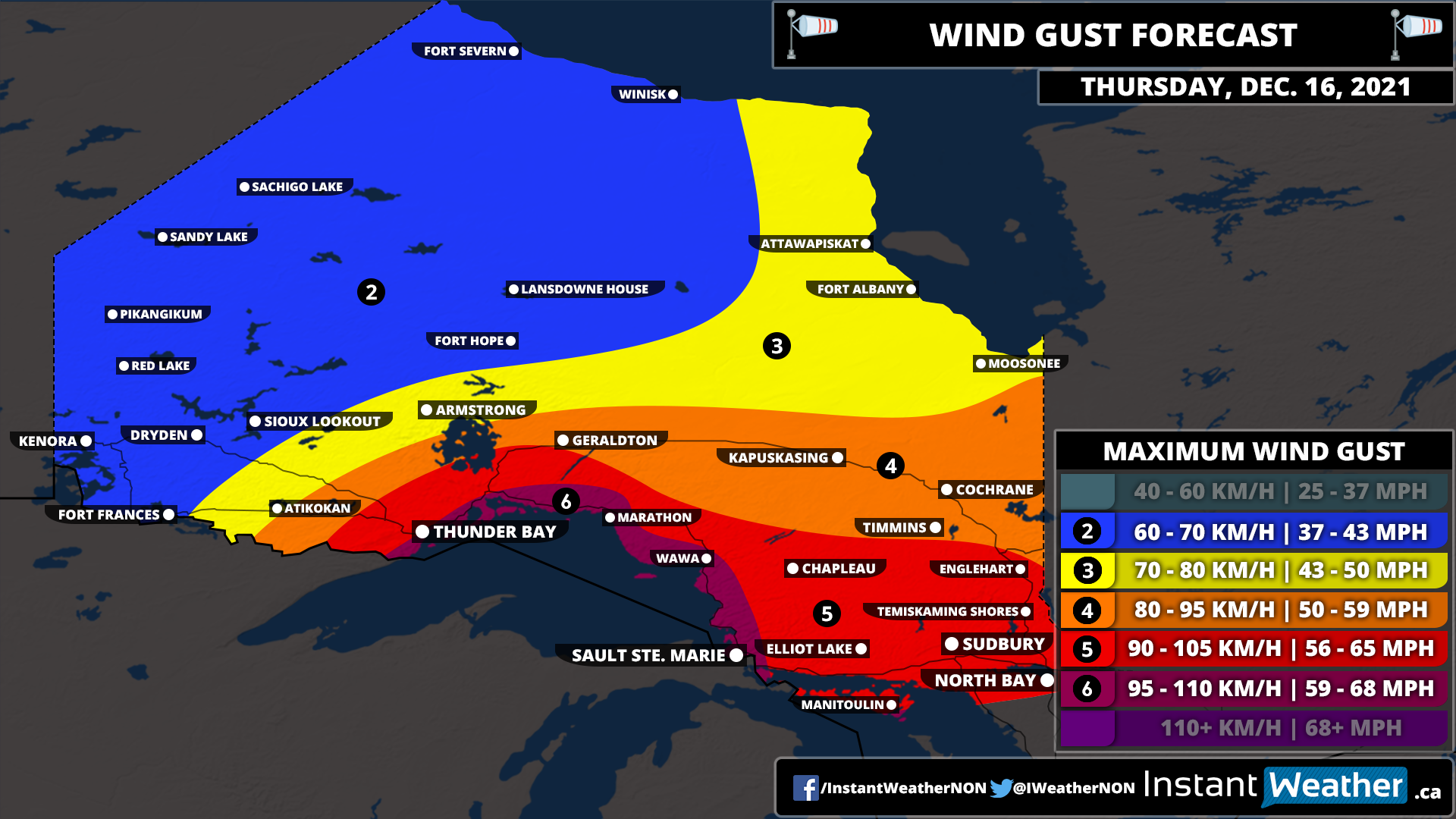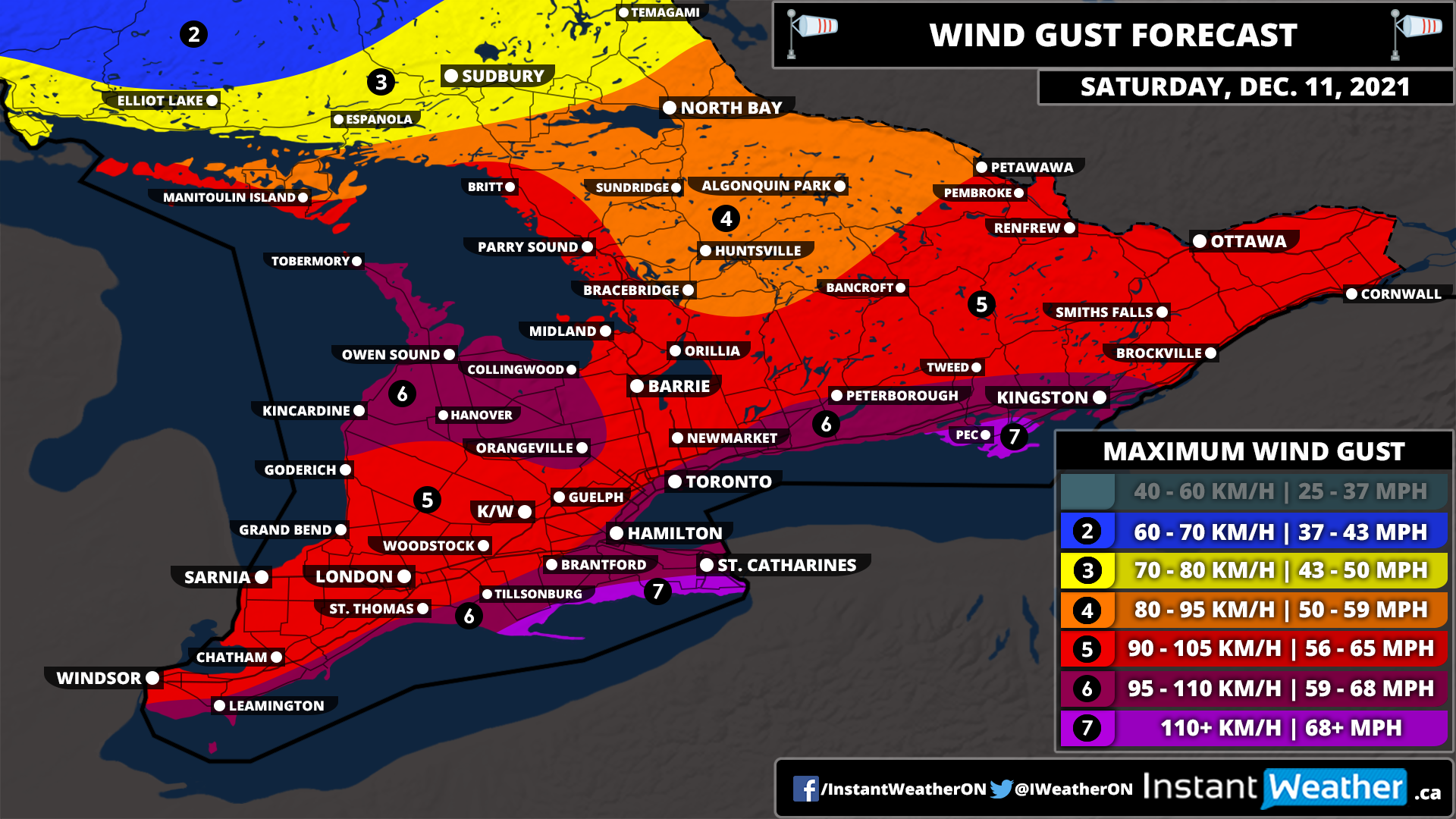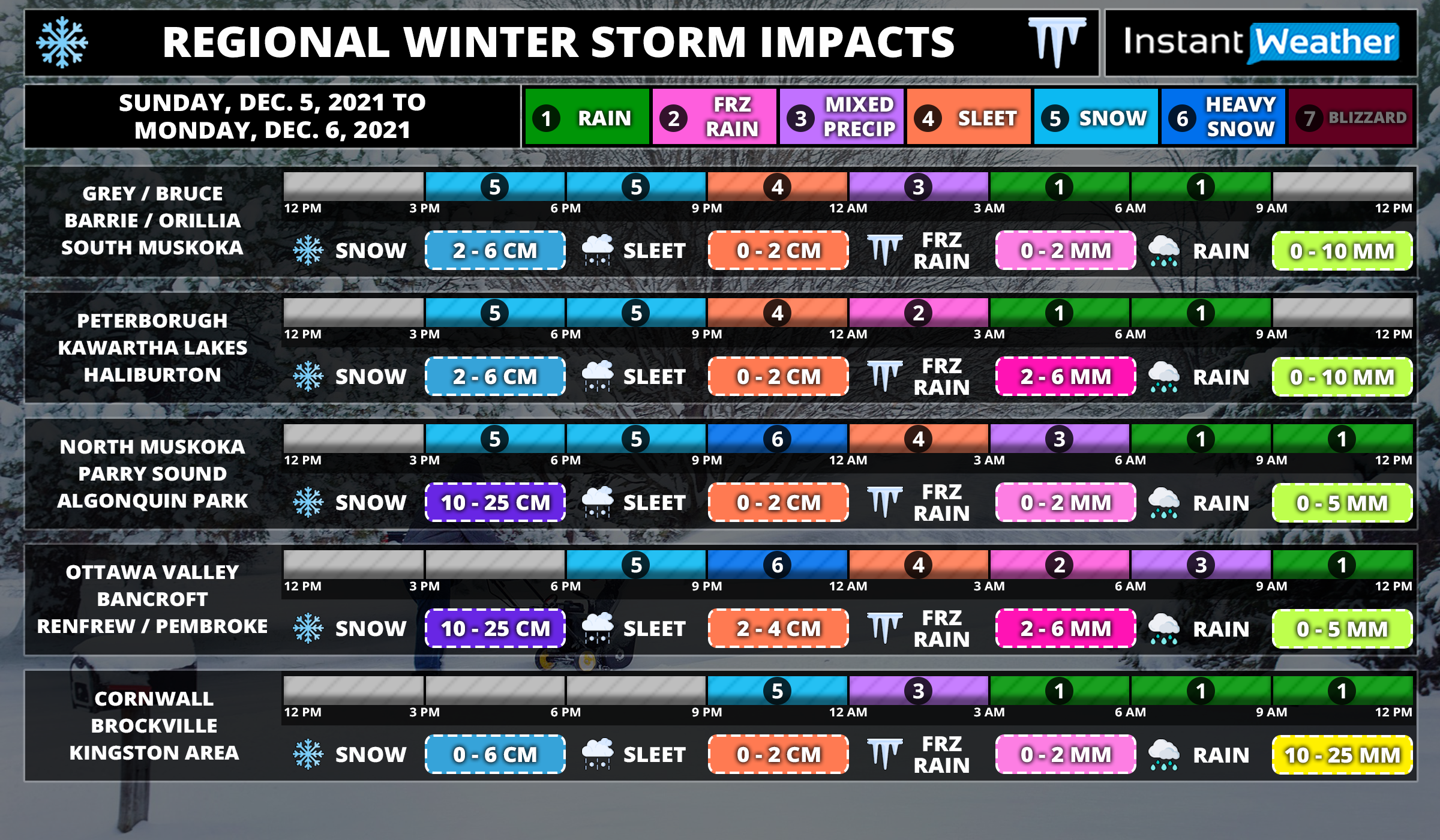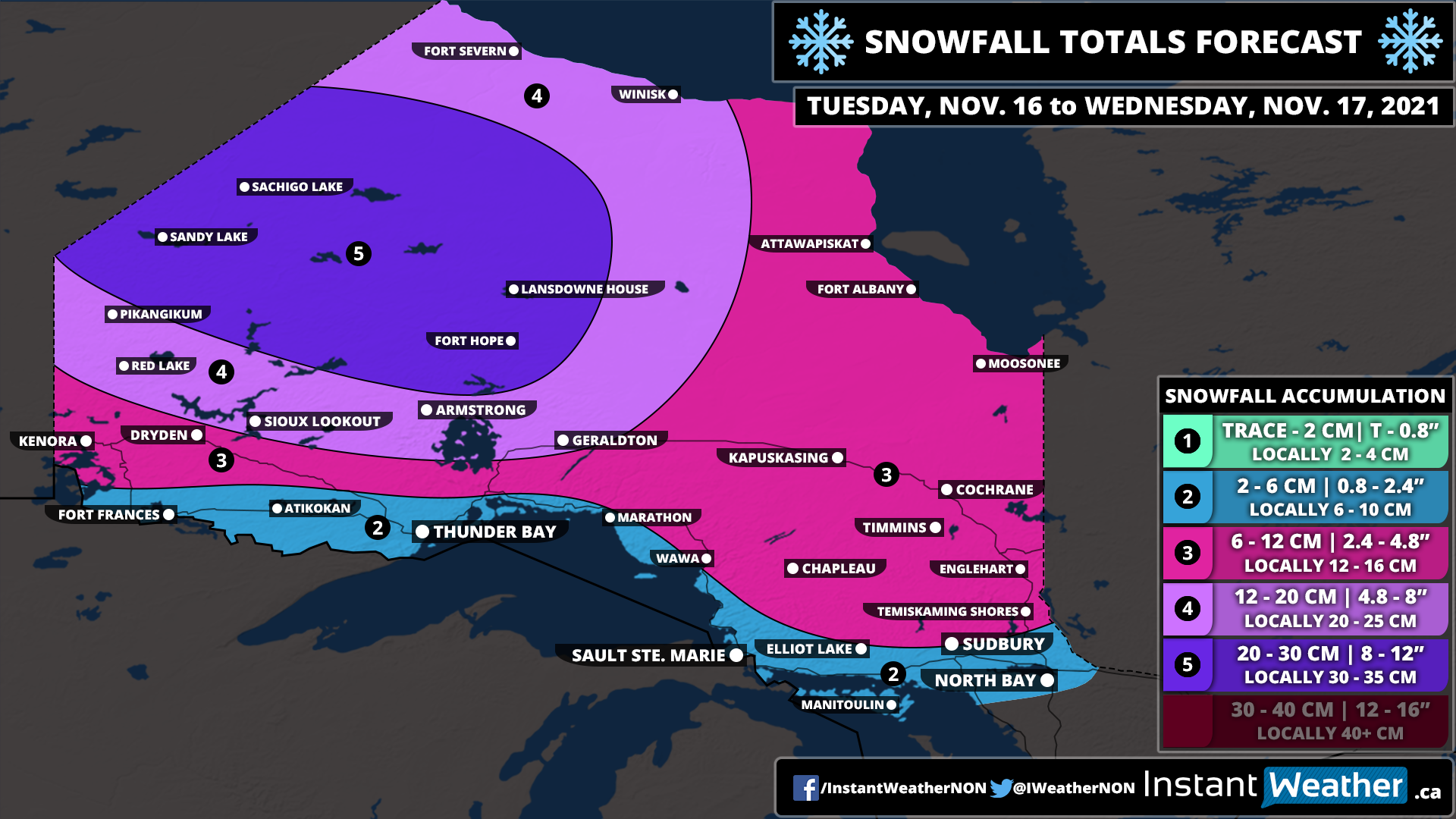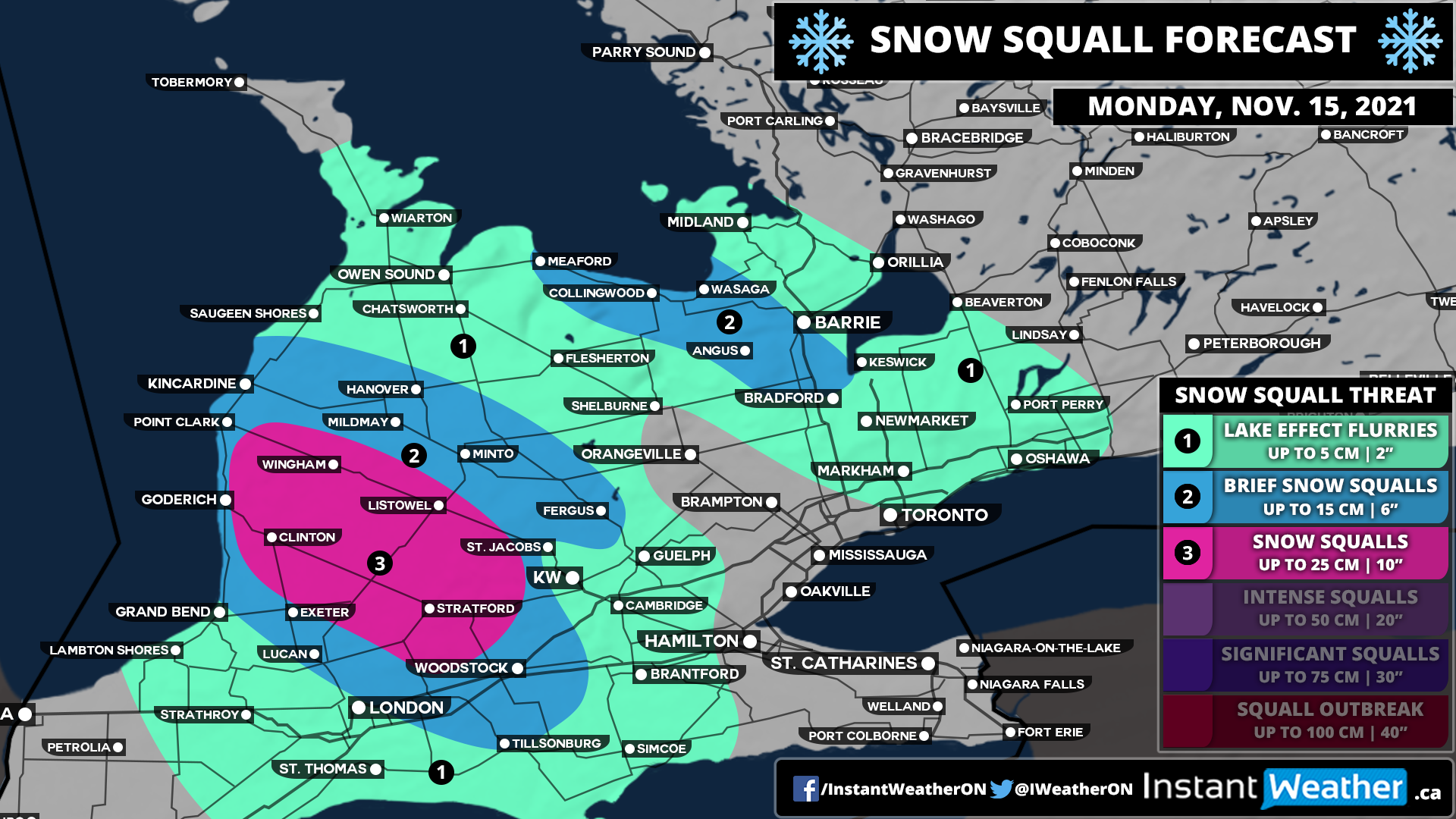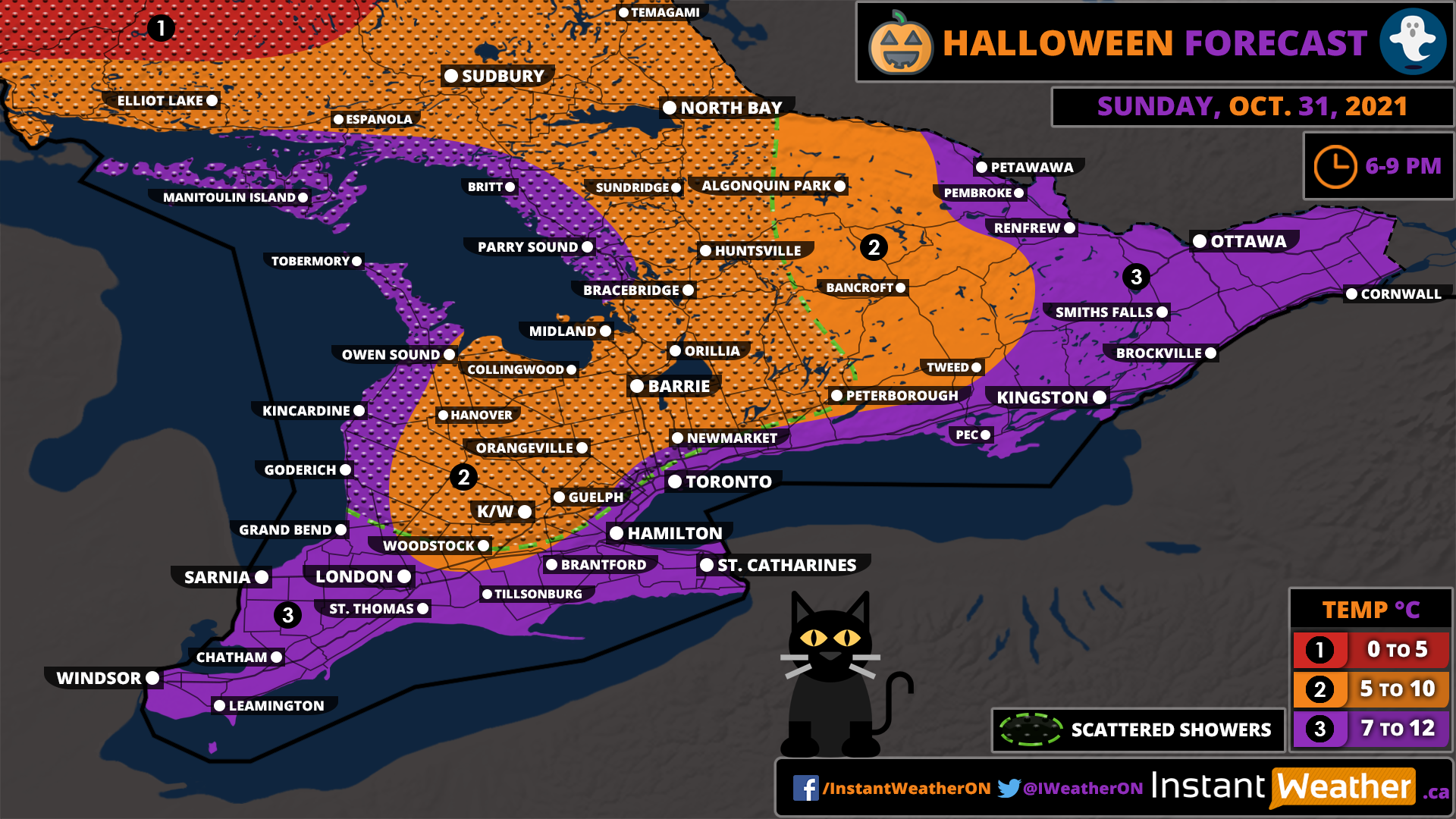Impactful Christmas Winter Storm To Deliver Up to 10-20cm of Snow or Prolonged Freezing Rain to Northern Ontario Between Friday and Saturday
/It won’t be quite the joyful Christmas across Northern Ontario when it comes to the weather as a messy winter storm is expected to move through the region beginning Christmas Eve and continuing into Christmas Day. The exact impacts will be very location-dependent as Far Northern Ontario including Sandy Lake through Lansdown House and into the Cochrane region will see heavy snowfall. For Northeastern Ontario, we’re looking at a mix of ice pellets/snow with the risk of prolonged freezing rain closer to Georgian Bay and Lake Superior around Sudbury and North Bay.
Precipitation will begin around the Manitoba border during the morning on Friday with persistent moderate to heavy snowfall expending eastward throughout the afternoon. By Friday evening, we expect the precipitation to start to move into areas east of Lake Superior where it will meet a layer of warmer air above the surface which will result in the development of a line of freezing rain and ice pellets. Current model guidance suggests that this line will stretch from Wawa through Chapleau and down into Sudbury. Keep in mind this is probably the most difficult part of the storm to forecast so it could be a little further north or south. Freezing rain will continue to linger around throughout the evening and even overnight into Christmas morning.
As we head into the later part of the morning on Saturday, we will see the bulk of the precipitation move out of the region. But light snow to the north and some freezing rain in the south will continue into the early afternoon. There is some concern regarding the potential ice accretion from the freezing rain because there won’t be a switch over to rain (except near the shorelines of Georgian Bay and Lake Superior). We also expect some colder air to flood in behind the system later in the day on Saturday which will help hold any of the ice in place on surfaces like trees and power lines. Don’t be surprised to see some power outages on Christmas Day that could continue for several days as the weight of the ice brings down more trees and power lines.
On the cold side of the storm, we’re looking at widespread accumulation ranging from 10-20cm for Far Northern Ontario. The bulk of the snowfall will come late Friday and into early Saturday morning. Lower amounts are expected further south where ice pellets will mix in and reduce the potential accumulation. Areas along the International border including Kenora and Thunder Bay will see mainly snow from this system, but accumulation is expected to be under 5cm due to lack of moisture so it’s not shown on the map.






